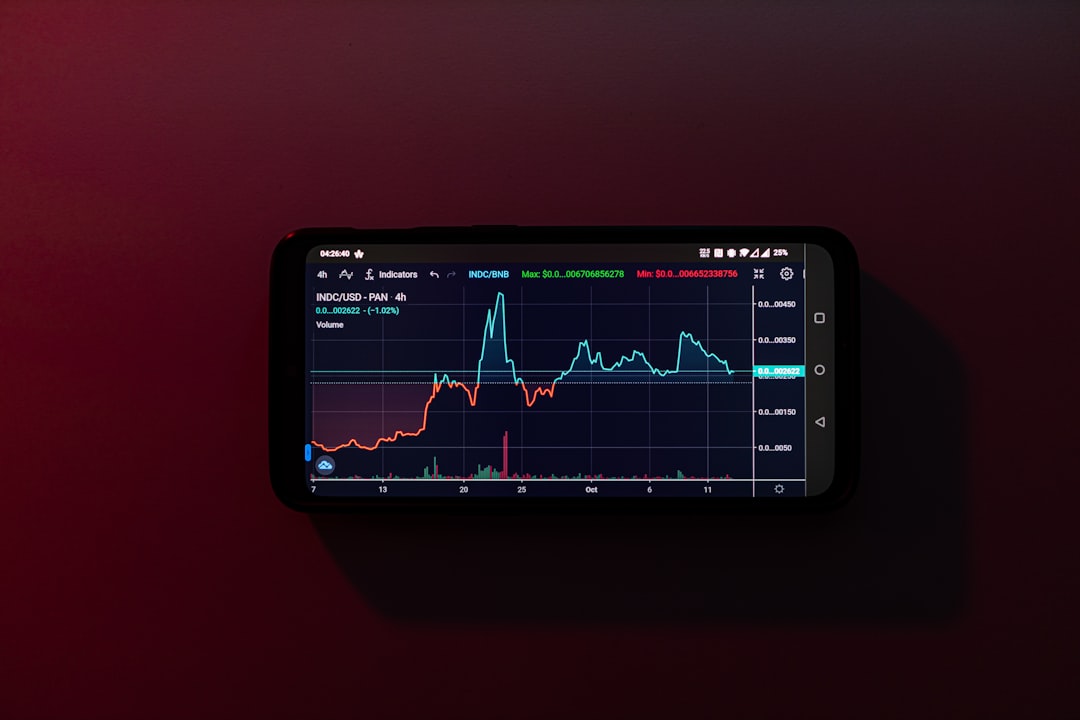Coinbase Transaction History Navigating the Complexities of Crypto Record-Keeping in 2024
Coinbase Transaction History Navigating the Complexities of Crypto Record-Keeping in 2024 - Accessing Your Coinbase Transaction History A Step-by-Step Guide
Gaining access to your Coinbase transaction history is fundamental for anyone navigating the complexities of cryptocurrency. The process itself is relatively simple. First, log in to your Coinbase account. Then, locate the "Reports" section, often found under "Manage Account" or a similar designation. From there, choose the "Taxes" option to begin pulling up transaction details.
If you need a comprehensive download of your transaction history, you can typically find it under "Documents" within the "Custom reports" section. This comprehensive record proves valuable for a variety of reasons, including tax compliance, tracking investment returns, and confirming completed transactions.
It's important to remember that the specific features and layout of the interface can differ depending on whether you're using the standard Coinbase platform, Coinbase Pro, or the Coinbase Wallet mobile app. Exploring the various options within your specific account will help you gain a deeper understanding of its features.
Security is paramount when accessing sensitive data. Employing two-factor authentication is a sensible practice for safeguarding your Coinbase account and your transaction history. While this level of security might be a slight inconvenience, it is well worth the added protection.
1. Coinbase offers access to a comprehensive transaction log, including not just buy/sell orders but also fees, a detail often overlooked when assessing gains and losses for tax purposes.
2. The downloaded transaction data comes in formats like CSV, a feature that enhances integration with tools like spreadsheets and accounting software, aiding in more sophisticated analysis of crypto activity.
3. Your Coinbase transaction history is securely stored and is accessible from any internet-connected device. This accessibility underscores the need to prioritize account security since these transaction records are sensitive and integral to maintaining accurate crypto records.
4. The platform enables users to refine their transaction history through filters based on dates, types of transactions, or their status. This filtering capacity makes it easier for users to specifically pinpoint relevant transactions, especially when reviewing specific time periods, like when preparing annual tax reports.
5. Coinbase's built-in cost basis tracking for each trade is a beneficial feature, vital for determining capital gains and losses. However, inaccuracies can emerge if users don't meticulously input all transactions, so user diligence is crucial for reliable cost basis calculation.
6. The platform presents users with detailed summaries segregated by transaction types, like buys, sells, and transfers. This breakdown assists users in gaining a holistic perspective of their overall trading activity.
7. With the evolving US tax landscape in 2024, comprehensive cryptocurrency income reporting is now mandatory. Having a readily accessible and structured transaction history is no longer just helpful, but required to remain compliant with evolving crypto tax regulations.
8. Coinbase uniquely tracks internal user-to-user transfers, a feature not typically found on other crypto exchanges. This offers users a more comprehensive view of their peer-to-peer exchange activity within the platform's ecosystem.
9. Although Coinbase provides a vast amount of data, the user interface for accessing transaction history can sometimes feel convoluted. This can make quickly locating needed transaction information challenging for some users.
10. Coinbase might introduce new features in 2024 including more real-time transaction updates and advanced data visualizations. These potential upgrades could prove valuable as the crypto market’s volatility necessitates close monitoring of one’s trading patterns.
Coinbase Transaction History Navigating the Complexities of Crypto Record-Keeping in 2024 - Understanding the Blockchain Transaction Hash and Its Importance
Within the realm of cryptocurrency, understanding the blockchain transaction hash is essential for comprehending the nature of your transactions and the overall system. Each transaction on a blockchain is assigned a unique identifier called a transaction hash (or tx hash). This hash acts like a fingerprint, verifying that the transaction has been validated and permanently recorded on the blockchain. Think of it as a receipt that allows you to locate and verify a specific transaction within the network.
Once a transaction is confirmed, its hash becomes unchangeable, preserving the integrity and transparency of the record. This hash contains key information about the transaction, like the assets involved and the transaction's current status. This feature of immutability is central to the blockchain's design—creating a secure, auditable record of all activity.
In 2024, as crypto record-keeping becomes increasingly complex due to regulatory changes, understanding the significance of transaction hashes is more important than ever. Platforms like Coinbase offer access to your transaction history, including the hashes for each transaction. When interacting with these platforms, understanding how hashes work and their role in blockchain security can give you a clearer picture of your financial activity and your compliance obligations.
1. Each transaction on a blockchain gets a unique identifier called a transaction hash, essentially a cryptographic fingerprint ensuring its integrity and ability to be traced. This hash is generated by feeding the transaction details through a hashing algorithm, resulting in a fixed-length string of characters. The crucial part is that this string is uniquely tied to the original data—no two transactions will ever have the same hash, barring exceptionally rare collisions.
2. This transaction hash acts as a timestamp, recording when the transaction was initiated. Once inscribed onto the blockchain, the hash becomes immutable, a prime example of the blockchain's unchangeable nature. You can think of it as a permanent, unalterable record.
3. For those with a technical bent, analyzing transaction hashes offers a window into blockchain network performance. Looking at the frequency of hashes (hash rate) and how long it takes for a transaction to be confirmed give insights into the effectiveness of the network under various workloads. It's a way to measure the efficiency of these decentralized networks.
4. While a single transaction may involve multiple actions (sending and receiving crypto, for example), it all gets neatly packaged into one transaction hash, acting as a concise summary of those actions within a single event on the blockchain. This makes it easier to handle complex activities in a streamlined way.
5. However, not all transaction hashes are alike. Different blockchains might use different hashing algorithms, which influence the final hash's length and format. This variation can affect how users and data analysts interact with and interpret the hash information. The exact details of how a hash looks will differ depending on the particular blockchain being used.
6. Beyond just identification, the transaction hash serves as a helpful tool for resolving disagreements and disputes. Since it's a unique identifier, stakeholders can independently verify if a transaction took place and its details, without needing a central authority to act as a middleman. This reinforces the decentralized nature of blockchains.
7. In 2024, as cryptocurrency regulation becomes more complex, the importance of transaction hashes could grow. Forensic accountants and regulatory bodies might rely heavily on them to follow the money trail in cases of suspected illicit activities or ensure compliance. This suggests that hashes could be crucial not only for regular users but also for broader societal functions.
8. Hashing technology itself can scale to meet growing demands. As more and more users adopt blockchain technology, improvements in hashing techniques could result in faster verification times, capable of handling increasing transaction volumes without compromising the security aspect. The core concept can adapt to the evolving use cases.
9. If there are irregularities or inconsistencies in the transaction hashes, it could signal a security breach. By understanding the principles behind these hashes, engineers can design methods to identify and address potential security vulnerabilities in blockchain systems. Anomalies in this seemingly simple but fundamental aspect of blockchain can reveal deeper problems.
10. Certain blockchains let users add extra data to transaction hashes, things like tags or comments. This functionality can enhance transaction tracking and boost overall network transparency, which can lead to a better user experience when managing cryptocurrency records. These add-on features suggest that blockchain technology is continuously evolving to address user needs.
Coinbase Transaction History Navigating the Complexities of Crypto Record-Keeping in 2024 - Filtering and Organizing Your Crypto Transactions for Better Clarity
Managing a growing number of cryptocurrency transactions requires a clear and organized approach for both understanding your financial activity and meeting regulatory demands. Coinbase provides tools to help with this, allowing you to filter your transaction history based on specific criteria like dates, transaction types, or status. This ability to refine your view of your transactions simplifies the process of locating specific events, which is particularly helpful when preparing tax documents or tracking your investment performance. By clearly understanding your transaction history, you gain a better grasp of your profits and losses, ensuring you're prepared for the increasingly complex regulatory landscape of crypto in 2024.
While Coinbase offers these helpful tools, successfully using them requires a thorough understanding of the platform's interface and the ability to critically examine your transaction details. Overlooked fees or forgotten trades can introduce inaccuracies into your record-keeping, leading to potentially problematic discrepancies. As the crypto landscape continues to evolve, the ability to expertly navigate these organizational tools is vital for maintaining a clear picture of your crypto activities.
Coinbase, while offering a broad range of transaction details, sometimes presents a challenge in efficiently sifting through the data. It's easy to overlook that sorting and filtering your transaction history can be a powerful tool, not just for tax purposes, but for understanding your own trading patterns and making better decisions in the future. For instance, you might not realize how quickly organizing your transactions by type (like trades vs. deposits) can make calculating potential capital gains far easier, saving considerable time, especially around tax season.
Interestingly, the way you execute a transaction – be it a trade, a withdrawal, or a deposit – can actually have differing tax consequences. Being aware of that nuance allows you to possibly structure your transactions in a manner that could potentially lead to a more favorable tax outcome, all while ensuring your records are accurate.
And it's surprising how many users tend to miss the significance of keeping a detailed log of transaction fees. While it may seem like a minor detail, fees add up, and they can have a meaningful impact on your overall returns. By filtering your transaction history to pull out just the fees, you get a far more accurate sense of your net gains, a detail that can be easily obscured if you're simply looking at a jumbled list of all activity.
Filtering by date is crucial for meeting regulatory requirements, particularly in the evolving US crypto tax environment of 2024. Beyond compliance, though, it lets you track your investment performance in specific market conditions. For those with a more analytical bent, it can provide a way to methodically refine investment strategies based on observed patterns across different periods.
Going beyond dates, filtering by asset type can reveal intriguing insights into the performance of individual cryptocurrencies within your portfolio. By isolating transactions for Bitcoin, Ethereum, or other assets you hold, you can identify trends and make more informed decisions about where to allocate your resources.
The filtering features in Coinbase and similar platforms are frequently underappreciated. Users might miss out on the opportunity to leverage sophisticated analysis to optimize their investments. Not recognizing these tools can potentially limit your overall financial outcomes.
Coinbase and other platforms offer a range of filtering options. These features go beyond simple categorization. Some even allow you to sort by the amount of a transaction or the type of crypto involved. This granular level of filtering can expose spending habits or investment trends that you might not otherwise have noticed.
In this era of increased crypto regulation, having a meticulous record of all your transactions isn't just prudent, it's becoming a necessity. Failure to keep records organized can lead to significant complications during audits or tax assessments. Having clear, easily verifiable records can save headaches and potential penalties down the road.
Looking at transaction history over time isn't just for auditing or tax purposes. It can reveal behavioral patterns related to your trading decisions. Understanding how things like emotional bias may influence your trades can potentially lead to more rational investment choices and, ultimately, improved investment returns.
Finally, experienced crypto traders and technical analysts emphasize the importance of recording not just the transactions themselves but also the reasoning behind them. Adding notes or filtering transactions by the description field can create a kind of personal knowledge base for future decision-making. It's a way to build a structured history of your thought process, enabling you to refine your strategies over time based on past decisions and their outcomes.
Coinbase Transaction History Navigating the Complexities of Crypto Record-Keeping in 2024 - Generating Comprehensive Reports The Key to Efficient Record-Keeping
Creating comprehensive reports is fundamental for keeping track of cryptocurrency transactions effectively. Especially in 2024, with changing tax rules for crypto, being able to get detailed transaction records from services like Coinbase is vital, both for individual financial insights and compliance. Coinbase offers tools to produce custom reports that cover a wide range of trading actions, like transaction fees and profit/loss summaries, which is helpful for anyone trying to understand their crypto activity.
However, while these tools are useful, the user interface can sometimes feel confusing, and it's easy to miss important details when putting together reports. Ignoring little things can lead to mistakes in tracking your finances and staying compliant with tax laws, which are getting stricter all the time. Becoming skilled at using Coinbase's report features isn't just about neatness; it's about protecting yourself from problems that can arise from the evolving landscape of cryptocurrency taxes.
Coinbase's reports go beyond just transaction details; they also include supporting information that's crucial for getting a grasp on how trades affect your overall crypto holdings and future choices. This extra data can be valuable for strategic decision-making.
By using the filters Coinbase provides, you can easily pull out transaction info based on specific timeframes, which can be a lifesaver when it comes to complying with regulatory requirements and preparing for potential audits or tax filings. You won't miss important information that could cause headaches later on.
Transaction fees can really vary depending on a number of factors, including things like network fees that change based on blockchain activity. Understanding this can have a noticeable effect on your final gains and overall approach to trading.
Interestingly, some research suggests that maintaining orderly records of your crypto activity can actually lead to better trading outcomes. This highlights the real-world importance of having a good system for keeping track of transactions.
Breaking down transactions by type (like buying, selling, or depositing) makes it much clearer to see how different trading methods are performing. This kind of insight can be really helpful when it comes to adjusting to shifts in the market.
Many people don't seem to realize that analyzing past transaction data can reveal some interesting patterns in market trends and how people react to them when making trading decisions. This kind of historical data can inform better strategies in the future.
Maintaining a structured history of all your transactions is becoming increasingly important given the ever-changing landscape of regulatory compliance. Not keeping detailed records can create a lot of challenges if you ever have to justify your financial activities during an audit.
The way Coinbase organizes your transaction data is often compatible with accounting programs. This suggests that maintaining organized records is important across different financial management tools.
When you use the filters to look at transactions based on specific crypto assets, you can get a better understanding of how your investments are diversified. This can help you figure out which crypto assets aren't doing well or are unexpectedly bringing in profits.
Coinbase lets you include things like tags or notes in your transaction history. This encourages users to explain their reasoning and provide context for their decisions. This isn't just good for immediate record-keeping but can also help you develop your long-term investment strategies over time.
Coinbase Transaction History Navigating the Complexities of Crypto Record-Keeping in 2024 - Navigating Different Transaction Types Deposits, Withdrawals, and Trades
Understanding the different types of transactions—deposits, withdrawals, and trades—within your Coinbase account is crucial for managing your crypto assets and ensuring accurate record-keeping in 2024. You can access your deposit and withdrawal history through the Portfolios section, easily switching between tabs to see details. A centralized view of all trades and order history is usually accessible through the Transactions page. Coinbase also provides the ability to generate comprehensive reports, allowing users to filter transactions based on date and type, a valuable feature for complying with evolving tax requirements. While generally user-friendly, the interface can sometimes feel complex, making it tricky to find specific transactions or quickly assess the cumulative impact of fees on your gains or losses. Recognizing the distinct characteristics and implications of each transaction type can prove advantageous when designing your crypto investment approach, particularly in the face of increasing regulatory scrutiny. Paying attention to how each of these aspects impacts your portfolio can ultimately lead to more effective financial strategies in this dynamic landscape.
1. The way you deposit or withdraw funds, or even just trade, can have different tax effects on your Coinbase account. Keeping track of these different transaction types precisely is important to get your tax situation right. It's easy to miss that the specific action has implications you need to understand.
2. The timing of when you put money into your account or take it out can affect the exchange rate, potentially changing how the transaction is valued. This can create subtle differences when you go back and look at older profit and loss data. It's a minor detail that can have consequences.
3. Coinbase makes it pretty easy to look at deposits and withdrawals. They're sorted into separate sections within your transaction history. This isn't common with older ways of keeping track of financial information, where you might have a jumble of activity. It's an example of how crypto platforms try to streamline information in helpful ways.
4. You might be surprised how quickly transaction fees can eat into profits from trading. It's worth paying close attention to these fees so you get an accurate understanding of your crypto investments. These costs might be a larger factor than you initially realize, potentially skewing returns in a negative light.
5. When you look at the "Trade" section in your history, you don't just see who owns something now. The cost basis and market changes are included in the data, and it can get complicated quickly. If you're trying to do tax reporting, it becomes important to really analyze the transactions in detail to ensure accuracy. There's a lot of information packed into these trades.
6. Filtering your transactions can help you see patterns in how you use the platform. For example, maybe there's a relationship between when the market is more volatile and how often you withdraw funds. Identifying these relationships can help make better trading choices in the future. User activity might be tied to factors you haven't previously considered.
7. Comparing the timing of your trades to the way the market changes can show you some interesting trends. It can be a way of figuring out whether your past trading methods have been effective or not. It's a simple but useful way to evaluate the effectiveness of strategies and learn from prior performance.
8. It's surprising how many people don't keep a record of why they made a certain trade or transaction. This is a big missed opportunity to learn from your decisions. If you were to track your reasoning, it could help you improve future trading results. It's a simple but effective way to reflect and improve upon decision-making.
9. Coinbase generally updates your transaction history pretty quickly, almost in real time. This is in contrast to older banking or investment systems, where it could take days or weeks for things to update. This fast update can help you react more quickly to changes in the cryptocurrency market. The near real-time update is a benefit of the technology that could inform how you use the platform.
10. How you place a trade—whether it's a quick market order or a more deliberate limit order—can actually affect the accuracy of the information in your historical record. This is particularly true when you try to trace the performance of your investments over time. The transaction mechanics themselves contribute to the details that are tracked. It's a subtle detail that is important to understanding the underlying mechanisms.
Coinbase Transaction History Navigating the Complexities of Crypto Record-Keeping in 2024 - Reconciling Coinbase Data with External Wallets and Exchanges
In the complex world of cryptocurrency in 2024, maintaining accurate records is crucial, especially when you're using various platforms. Keeping track of your crypto across Coinbase and other wallets or exchanges can be a challenge. You need to carefully match up transaction data, such as deposits, withdrawals, and trades, as these can have different tax consequences based on the specific type of action and when it happens. If your records aren't complete or correct, you can run into problems during audits or when you're preparing your taxes. It's important to be careful and make sure your records are clear and well-organized. Doing this helps you stay compliant with regulations but also makes it easier to make good decisions about how you manage your various crypto investments. Essentially, accurately piecing together your Coinbase information with activity from outside platforms isn't just about following rules; it's about making sure you have a strong grasp of your overall cryptocurrency finances.
1. Matching up Coinbase's transaction data with information from other wallets and exchanges can highlight inconsistencies in how transactions are recorded, largely because each platform manages its own internal records differently. Users might find differences in fees or the exact time a transaction was processed, making it important to double-check things carefully.
2. A lot of external cryptocurrency wallets don't store details about a transaction, such as why it was done or the context of a trade, making it critical to keep careful records when combining data from different places.
3. When you're trying to match up data, it's essential to factor in the fees charged by the network when you move crypto from Coinbase to another wallet because these fees can have a significant impact on your calculations of profit or loss. If you miss these fees, you could end up with an inaccurate picture of your net gains.
4. People often don't realize that some exchanges don't provide the same level of transaction detail as Coinbase. This can make it harder to reconcile the information, particularly if you need highly accurate records for legal reasons or taxes.
5. The timestamps attached to transactions can be different across platforms due to time zone settings, which can make the reconciliation process more challenging. Understanding these potential differences is essential to keeping accurate financial records.
6. It's interesting that some external platforms have tools that warn users about unusual transaction activity, like large withdrawals or deposits, which can be useful for confirming data against your Coinbase records.
7. Reconciling transactions also involves understanding how different types of crypto might have unique tax implications depending on where you are. Dealing with these variations is key to having a comprehensive set of transaction records.
8. Research shows that users who maintain thorough records from both Coinbase and other wallets tend to be better at timing their trades and managing risk, as they can learn from the insights they gain from the combined information and use it to shape their investment approaches.
9. Reports created by Coinbase can act as a reference point for comparing your performance across various platforms, highlighting patterns that can provide insights into your trading behavior and how the market moves.
10. As the rules for crypto change, having a complete picture of all your transactions across platforms is becoming more important. This suggests that being able to match up data from different places will be essential to dealing with future regulations in the crypto world.
More Posts from cryptgo.co:
- →Vitalik Buterin's Critical Analysis Layer 2 Networks Including Blast Face Scalability Hurdles in Late 2024
- →FIFO Method in Cryptocurrency Taxation Implications for Bitcoin Investors in 2024
- →Cryptocurrency Mining in 2024 Efficiency Gains and Environmental Challenges
- →Bitcoin Halving 2024 Analyzing the Impact on Cryptocurrency Markets and Mining Dynamics
- →Coinbase Expands 24/7 Phone Support What Users Need to Know in 2024
- →A Step-by-Step Guide to Cashing Out Cryptocurrency on Coinbase in 2024





